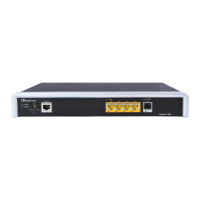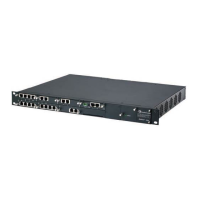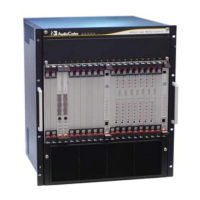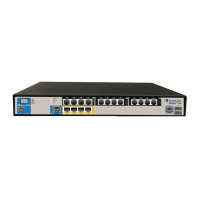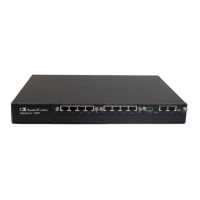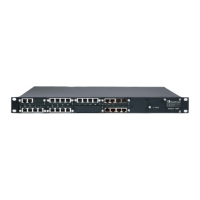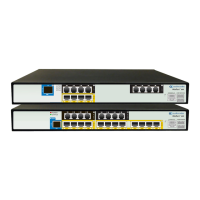User's Manual 326 Document #: LTRT-68822
Mediant 2000
To configure alternative Trunk Group routing based on Q.931 cause codes:
1. In the Proxy & Registration page, set the 'Redundant Routing Mode' parameter to
Routing Table so that the device uses the Inbound IP Routing table for alternative
routing.
2. In the Inbound IP Routing table, configure alternative routing rules with the same call
matching characteristics, but with different Trunk Group destinations.
3. Configure up to five Q.931 cause codes that invoke alternative IP-to-Tel routing:
a. Open the Reasons for Alternative Routing page (Configuration tab > VoIP menu
> GW and IP to IP > Routing > Alternative Routing Reasons).
Figure 24-8: IP to Tel Reasons - Reasons for Alternative Routing Page
b. Under the 'IP to Tel Reasons' group, select the desired Q.931 cause codes.
c. Click Submit to apply your changes.
Notes:
• You can configure up to two alternative routing rules in the Inbound IP Routing
table.
• If a Trunk is disconnected or not synchronized, the device issues itself the internal
Cause Code No. 27. This cause code is mapped (by default) to SIP 502.
• The default release cause is described in the Q.931 notation and is translated to
corresponding SIP 40x or 50x values (e.g., Cause Code No. 3 to SIP 404, and
Cause Code No. 34 to SIP 503).
• For mapping SIP-to-Q.931 and Q.931-to-SIP release causes, see Configuring
Release Cause Mapping on page 302.
• For configuring IP-to-Tel routing rules in the Inbound IP Routing table, see
'Configuring Inbound IP Routing Table' on page 317.
• The Reasons for Alternative Routing IP to Tel table can also be configured using
the table ini file parameter, AltRouteCauseIP2Tel.
24.6.2 Alternative Routing to an IP Destination upon a Busy Trunk
You can configure the device to forward (i.e., call redirection) IP-to-Tel calls to an
alternative IP destination using SIP 3xx responses. This can be done upon the following
scenario:
Trunk Group has no free channels (i.e., “busy”).
This feature is configured per Trunk Group and is configured in the Forward on Busy Trunk
Destination table, as described in this section.
The alternative destination can be defined as a host name or as a SIP Request-URI user
name and host part (i.e., user@host). For example, the below configuration forwards IP-to-
Tel calls to destination user “112” at host IP address 10.13.4.12, port 5060, using transport
protocol TCP, if Trunk Group ID 2 is unavailable:
ForwardOnBusyTrunkDest 1 = 2, 112@10.13.4.12:5060;transport=tcp;
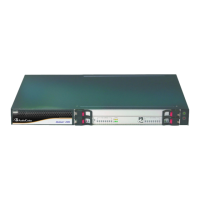
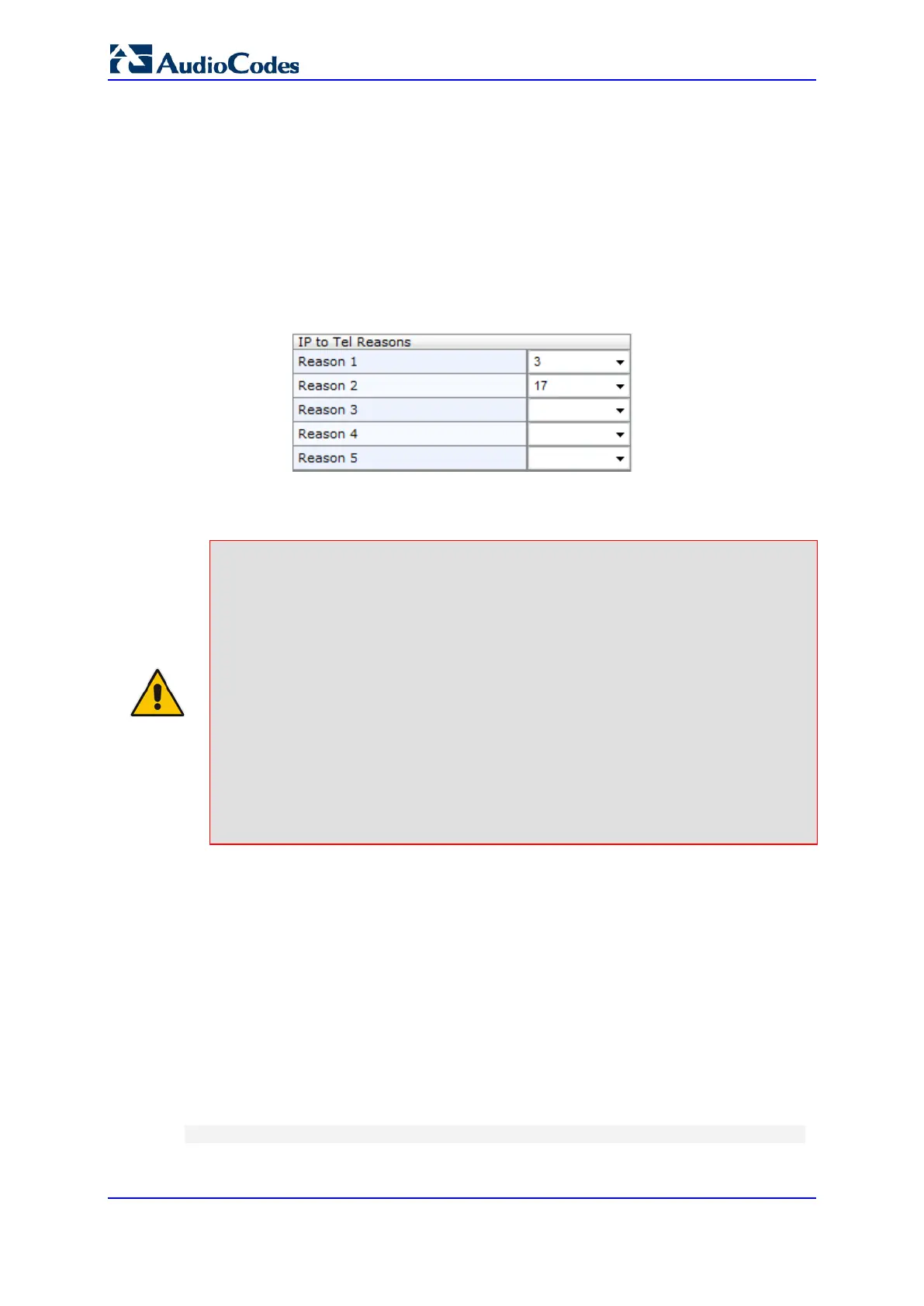